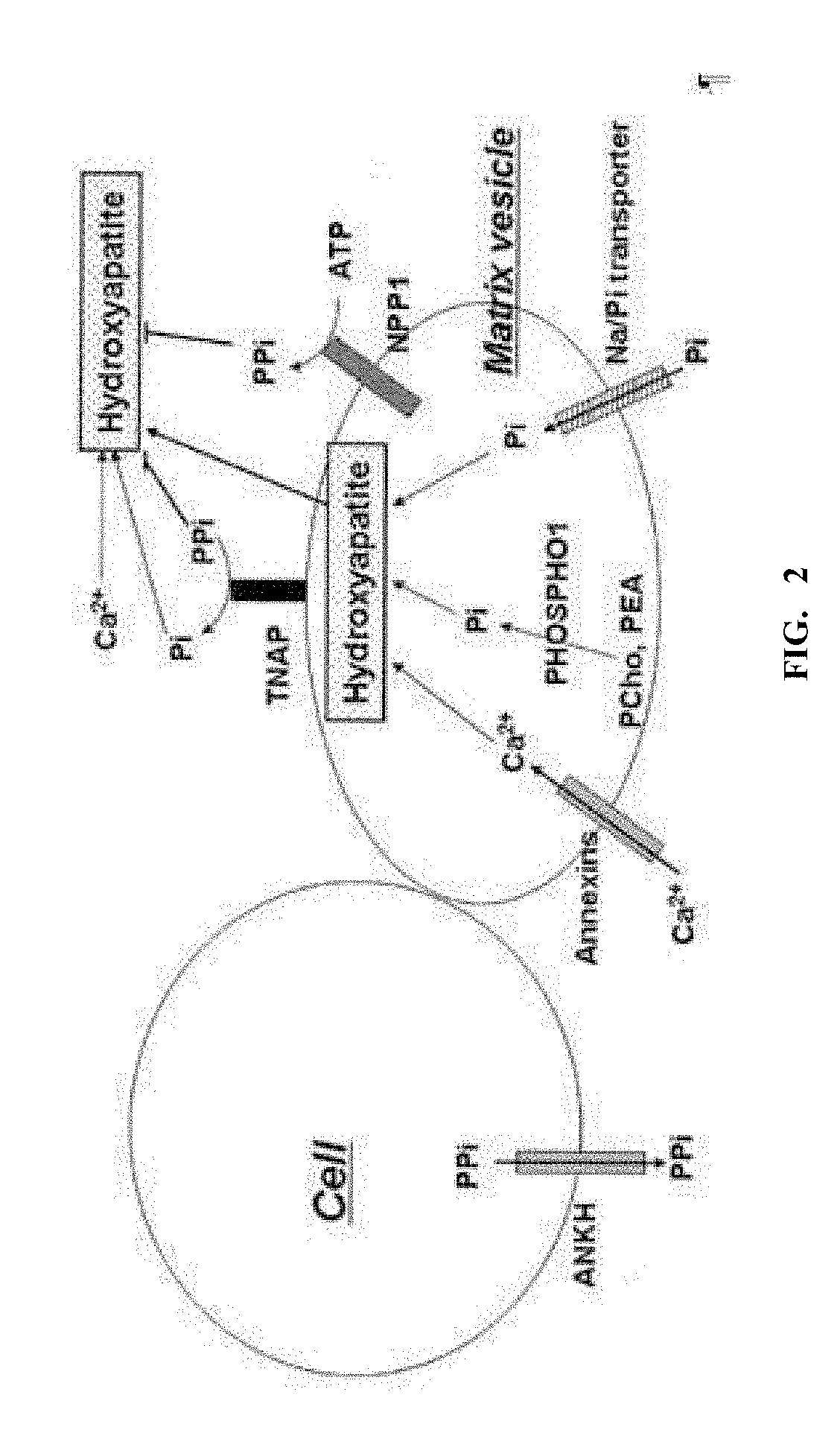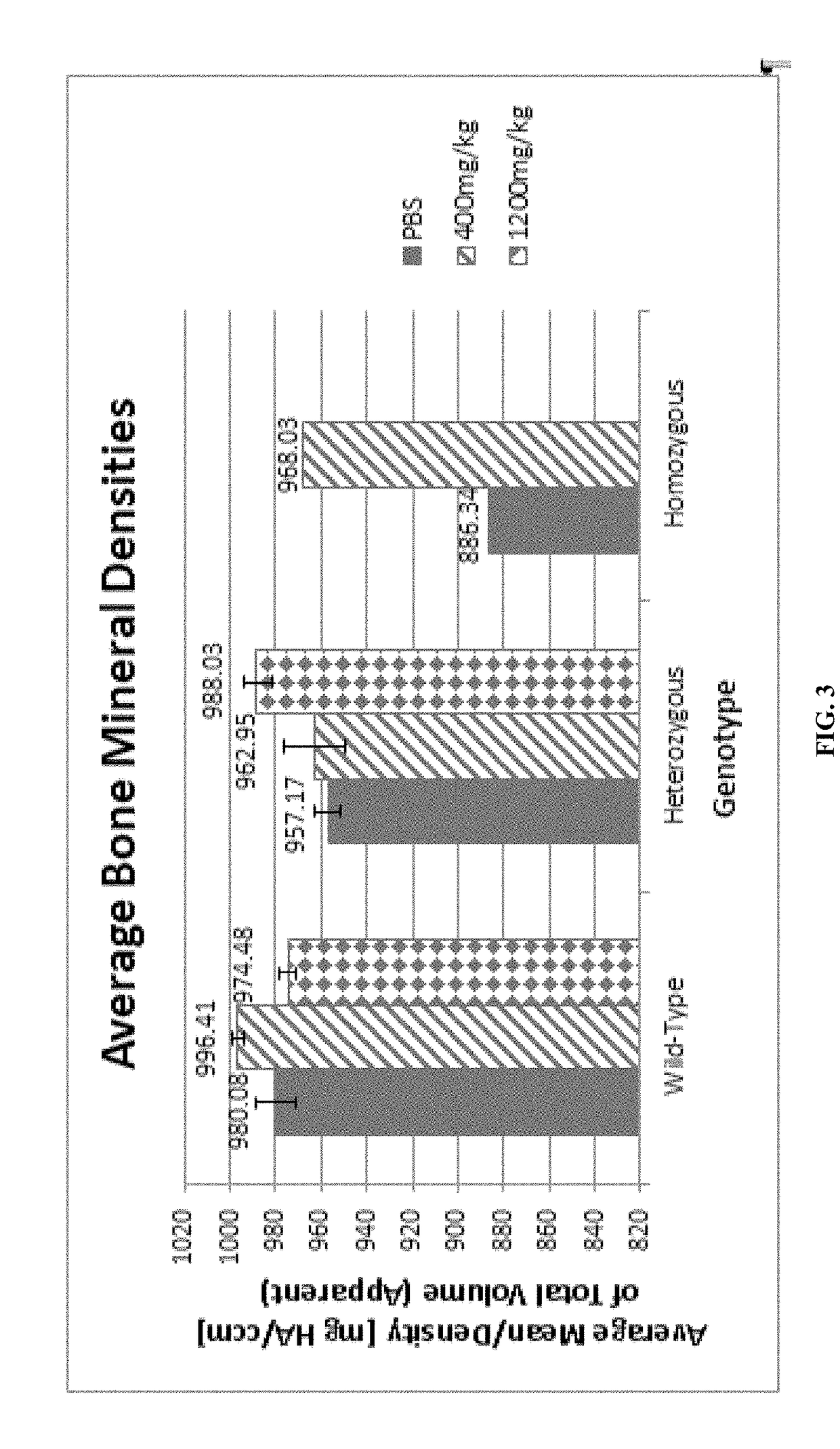Iminosugars for improving bone mineral density in bone disease
- Summary
- Abstract
- Description
- Claims
- Application Information
AI Technical Summary
Benefits of technology
Problems solved by technology
Method used
Image
Examples
example 1
[0069]TNSALP-null (Akp2− / −) mice served as an in vivo model of infantile HPP to analyze the effects of Miglustat as a treatment for HPP through BMD measurements. In comparison to wild-type serum levels, Akp2− / − mice exhibit ˜1% of ALP activity, while heterozygous mice display roughly 50%. Resembling patients with HPP, elevated substrate concentrations of PEA, PPi, and PLP were found in urine samples from knock-out mice. Knockouts did not radiographically show skeletal defects at birth, but later developed the disease, similar to patients with infantile HPP.
[0070]The eight treatment groups included three genotypes (wild-type, heterozygous, and homozygous) and three treatments (Phosphate-buffered saline (PBS), Miglustat (400 mg / kg), Miglustat (1200 mg / kg). After one month of treatment, ventral and side x-rays were taken and the femur was microCT scanned to determine BMD. Higher Miglustat doses led to higher average BMD values, with the exception of one treatment group, indicating that...
example 2
[0086]TNSALP-null (Akp2− / −) mice served as an in vivo model of bone disease to analyze the effects of the iminosugar, Miglustat.
[0087]Mice were obtained, bred and genotyped as described above. Five mice of each genotype (Wild-type (WT), heterozygous (Het), and homozygous (KO)) were included in each treatment group (i.p. administration of PBS, 400 mg / kg Miglustat, and 1200 mg / kg Miglustat as described above). A total of 44 mice were analyzed (1 Akp2− / − homozygous mouse was omitted in the PBS group). Mice were scanned using microCT and analyzed as described above. Cortical bone in the middle 20% of bone length from trochanter to distal condyles in the femur was scanned and cortical thickness and bone mineral density were obtained. Cortical thickness (Ct.Th, μm) was used as an indication of average thickness of cortical bone. Trabecular bone of the final 625 μm before the femoral growth plate was scanned.
[0088]As depicted in FIG. 12, high doses of Miglustat impeded growth in mice as me...
PUM
| Property | Measurement | Unit |
|---|---|---|
| Dimensionless property | aaaaa | aaaaa |
| Dimensionless property | aaaaa | aaaaa |
| Mass | aaaaa | aaaaa |
Abstract
Description
Claims
Application Information
 Login to View More
Login to View More - R&D
- Intellectual Property
- Life Sciences
- Materials
- Tech Scout
- Unparalleled Data Quality
- Higher Quality Content
- 60% Fewer Hallucinations
Browse by: Latest US Patents, China's latest patents, Technical Efficacy Thesaurus, Application Domain, Technology Topic, Popular Technical Reports.
© 2025 PatSnap. All rights reserved.Legal|Privacy policy|Modern Slavery Act Transparency Statement|Sitemap|About US| Contact US: help@patsnap.com



